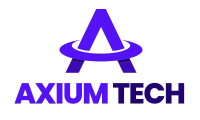The integration of software platforms has significantly transformed the automotive industry, enabling the reducing cost of vehicle ownership. This transformation is primarily driven by advancements in technology that enhance vehicle efficiency, optimize maintenance, and streamline various aspects of car ownership. This discussion explores how these software integrations have contributed to cost savings for consumers.
1. Enhanced Vehicle Efficiency
One of the most significant ways software integration reduces car ownership costs is through improved vehicle efficiency. Modern vehicles are equipped with sophisticated software systems that optimize engine performance, fuel consumption, and driving behavior. For instance, Engine Control Units (ECUs) use complex algorithms to adjust fuel injection, ignition timing, and other parameters to maximize fuel efficiency. These adjustments ensure that vehicles run more efficiently, which translates to fewer trips to the gas station and lower fuel expenses.
Additionally, software platforms such as those used for electric vehicles (EVs) and hybrids offer advanced energy management systems. These systems monitor and optimize battery usage, regenerative braking, and power distribution. As a result, EVs and hybrids often have lower running costs compared to traditional internal combustion engine vehicles. The integration of software in these vehicles helps drivers get the most out of their energy sources, reducing the overall cost of driving.
2. Predictive Maintenance and Diagnostics
Software platforms have revolutionized vehicle maintenance through predictive diagnostics and real-time monitoring. Advanced onboard diagnostics systems (OBD) continuously monitor various vehicle components and systems. These systems can detect potential issues before they become serious problems, allowing for early intervention and repair. For example, if a software system identifies that a component is nearing the end of its lifespan or that an issue is developing, it can alert the driver or the service center in advance.
This proactive approach to maintenance helps prevent unexpected breakdowns and expensive repairs. By addressing issues early, drivers can avoid the high costs associated with emergency repairs and extended vehicle downtime. Furthermore, predictive maintenance powered by software can optimize service schedules, ensuring that vehicles are serviced only when necessary, thus avoiding unnecessary expenses.
3. Improved Fleet Management
For businesses and individuals who own multiple vehicles, software integration offers substantial savings through improved fleet management. Fleet management software platforms provide tools for tracking vehicle performance, monitoring fuel consumption, and managing maintenance schedules. These platforms can analyze data from all vehicles in the fleet to identify trends, optimize routes, and reduce operational costs.

For example, software platforms can help fleet operators analyze driving patterns and implement strategies to improve fuel efficiency. They can also automate maintenance scheduling and ensure that vehicles are serviced at the optimal times, reducing the likelihood of costly breakdowns. By leveraging these technologies, businesses can achieve significant cost savings and improve the overall efficiency of their operations.
4. Insurance Cost Reductions
Telematics and other software-driven technologies have also impacted insurance costs. Many insurance companies now offer usage-based insurance (UBI) programs, where premiums are determined based on driving behavior and vehicle usage. Through telematics devices or smartphone apps, insurers can collect data on driving habits, such as speed, braking patterns, and mileage.
Safe driving behaviors can lead to lower insurance premiums, providing a direct financial benefit to drivers. Additionally, some insurance providers offer discounts for vehicles equipped with advanced safety systems and features, which are often integrated and managed through software platforms. This integration allows drivers to benefit from lower insurance costs by demonstrating responsible driving habits and maintaining well-equipped vehicles.
5. Reduced Administrative and Operational Costs
Software integration streamlines various administrative tasks associated with vehicle ownership. For instance, online platforms for vehicle registration, insurance management, and service scheduling reduce the time and effort required to manage these aspects. By automating and digitizing these processes, software solutions minimize paperwork, reduce administrative overhead, and eliminate the need for physical visits to offices or service centers.

Moreover, software platforms can facilitate seamless communication between drivers, service providers, and dealerships. Features such as online appointment scheduling, digital service records, and automated reminders contribute to a more efficient and cost-effective ownership experience. These conveniences not only save time but also reduce the costs associated with managing and maintaining a vehicle.
6. Increased Resale Value
The integration of software platforms can also positively impact a vehicle’s resale value. Modern vehicles equipped with advanced software and technology often have higher resale values due to their enhanced features and performance. Buyers are increasingly looking for vehicles with up-to-date technology, advanced safety features, and efficient performance, all of which are facilitated by software integration.
Additionally, vehicles with digital service records and maintenance logs are often valued higher in the used car market. These records provide potential buyers with a comprehensive history of the vehicle’s maintenance and repairs, contributing to greater confidence in the vehicle’s condition and reducing the likelihood of future issues.
7. Cost-Efficient Ownership Through Shared Mobility
Software platforms have also contributed to the rise of shared mobility services, such as ride-sharing and car-sharing programs. These services offer an alternative to traditional car ownership, allowing individuals to access vehicles on an as-needed basis. By leveraging software to manage reservations, payments, and vehicle access, these platforms reduce the overall cost of transportation for users.
Car-sharing programs, for example, eliminate the need for individuals to own a vehicle outright, thereby saving on expenses such as insurance, maintenance, and depreciation. Instead, users pay for the time they use the vehicle, often resulting in lower overall costs compared to full ownership.
Conclusion
The integration of software platforms has had a profound impact on reducing the cost of owning a car. From enhancing vehicle efficiency and enabling predictive maintenance to improving fleet management and reducing insurance premiums, these technological advancements offer significant financial benefits to consumers. The streamlined administrative processes, increased resale values, and the rise of shared mobility further contribute to the overall cost savings associated with car ownership. As technology continues to evolve, it is likely that software platforms will play an even more prominent role in shaping the future of automotive cost management.



